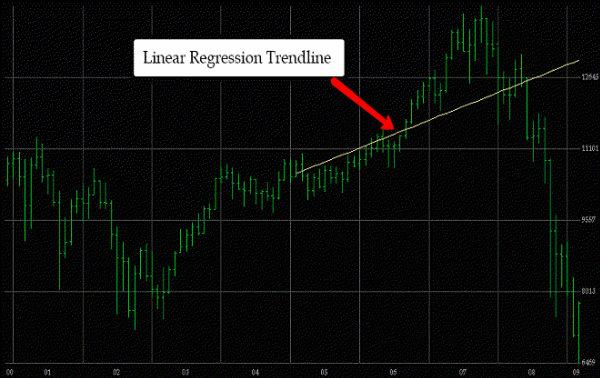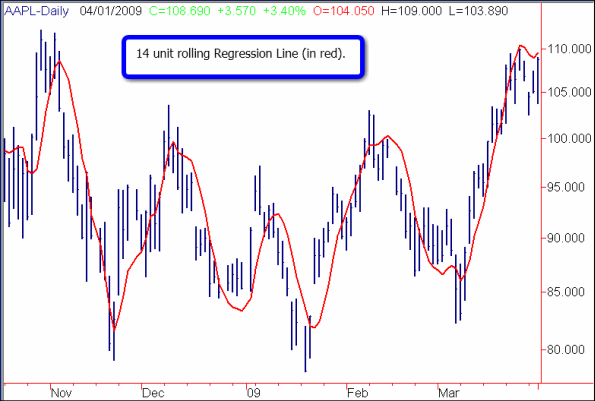| A Look at Regression Lines And Channels |
| By Price Headley |
Published
04/2/2009
|
Currency , Futures , Options , Stocks
|
Unrated
|
|
|
|
A Look at Regression Lines And Channels
Linear regression, regression lines and regression channels can be useful tools in technical analysis. In its mathematical form linear regression examines how two variables (labeled X and Y) interact with each other. Theoretically, you know the values for X and Y and you are searching for the best straight line through the data filling the gap between the two. Often the formula will be used to find values for X using Y, or for Y using X.
Let's now look at how to use linear regression in technical analysis. Simply stated, a linear regression trendline is drawn between two points using the least squares method (defined as a statistical formula that fits a straight line through a set of points so the sum of the squared distances from X and Y to the line is lessened). The formulas used for the least squared method involves quite a bit of calculus and other fun math. For those wanting the formula, here you go: Y= a + bX + u, where Y is the variable to predict, X is the variable used to predict Y, a is the intercept, b is the slope, and u is the regression residual.
In technical analysis, linear regression theoretically helps examining a chart by showing what could be considered a "fair" or "average" value at a moment in time. Using the least squares method, draw a trendline between two points. The trendline will fall right at the middle of the prices. The chart below shows a linear regression trendline, drawn on a monthly chart of the Dow Jones Industrial Average.
Monthly DJIA Chart with Linear Regression Trendline

You can see from the above chart that a Linear Regression line is basically a fixed "best fit" line. These can be useful for purposes such as tracing retracement rallies and fibonacci sequences. You can also "roll" these lines by moving them forward each day (or unit) based on a fixed number of back data ... this could be called a Rolling Regression Line. The following chart shows an example of this.
Daily AAPL Chart with 14 Unit Regression Line

The next step that many utilize from here is to make the Rolling Line into a "Regression Channel", usually through the use of Standard Deviations that create a Top and Bottom Band around the middle line. These can then be utilized to determine support, resistance, breakout, re-test, and acceleration areas.
Price Headley is the founder and chief analyst of BigTrends.com.
|